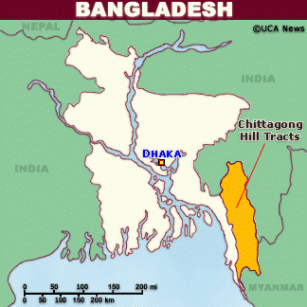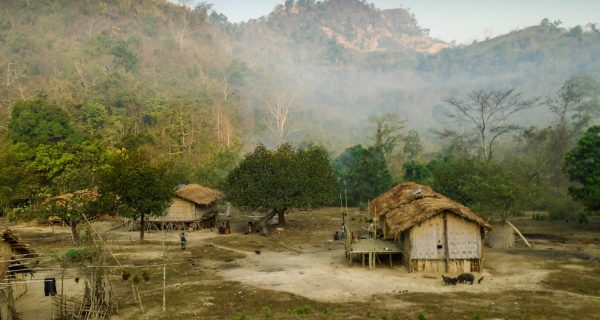Story of The Hills

The Hills of Bangladesh (Chittagong Hills Tracts) are a 5,093-square-mile area of rugged hills, dense vegetation, and deep river valleys in southeast Bangladesh. Eleven tribes with a population of 800,000 reside in these hills – each with their own language and culture, ethnically distinct from the mainstream Bengali population. The tribal people are a self-reliant, friendly, and communal society led by village chieftains. They honor their tribal chiefs as community leaders who recognize the voice of their people. The tribes practice the religions of Buddhism, Hinduism, Christianity, and Animism.
In the Hills, a strong military presence controls the tribes. A response to counter a tribal insurgency in the 1970s was the initial basis for this military presence, but current occupational motives are primarily socio-economic. This military occupation restricts foreign presence in the Hills to a few tourists and limits foreign assistance.
Two generations ago, the tribes were agriculturally self-sufficient. Today, government land seizures, land loss to Bengali settlers, and infertile soils have resulted in meager farms where tribal families struggle to support themselves. The tribes see education as the solution to breaking their poverty cycle, but families often live in small villages, deprived of schools. And a typical tribal family spends 94% of their income on food, leaving scarce funds for education.
Across the Hills, many thousands of children have no school. An estimation is that just 44% of all tribal children enroll in school, and only 8% complete their primary education.
This community is hard-working and desperately seeking solutions to their lack of educational opportunity. But their options are few.


When the Gospel was first brought to the Hills by Baptist missionaries in the late 1950s, its impact was immediate. Hundreds came to Christ, and small “Jesus Houses” – or churches – sprang up across the land. In 1965, a war with India resulted in foreigners banned from traveling in the Hills. Thankfully, God’s Word does not return void. Tribal evangelists continued to preach, and the numbers of Christians grew. In 1989, fifty-five tribal churches banded together to form the Bangladesh Tribal Association of Baptist Churches (BTABC). Today, there are 178 churches within the BTABC and thousands of Christians. Sadly, most cannot read the Bible.
The BTABC is working to fill the educational void in the Hills by opening Primary Schools in villages with BTABC churches. Today, the BTABC has 66 Primary Schools in 178 of their villages, but more than 2,000 of their children are still waiting for school.
Currently, 1.6 million people live in the tribal lands, and the population is rapidly increasing as Muslim Bengali settlers displace the tribes from their communal land. These lands were once reserved for tribal people, but Bengalis have run out of living space, and acquisition of tribal lands in the Hills is their only option. The future of the tribes is in doubt. Families face hunger and struggle to survive as their agriculture can no longer support the population. BTABC and CoH believe that a Christian education is key to a brighter future, offering the hope of Christ and alternative vocational paths to self-sufficiency.
